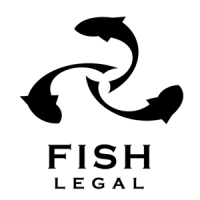The findings of an Agency-comissioned report confirm what lawyers from Fish Legal have been saying for years: that too much sewage is getting into the lake and much of it is untreated. The Environment Agency has, until now, been reluctant to admit that sewage pollution was indeed the main cause, blaming natural processes and climate change instead.
The glacial Llyn, protected as a SSSI, supports one of only three remaining native populations of arctic charr; a species highly sensitive to environmental changes; the report confirms that charr populations are in decline and that sewage is to blame.
The report also highlights a number of inputs of untreated sewage including storm overflows and unconsented discharges coming from Llanberis. However, it also suggests that untreated sewage enters the lake even when there is no rainfall – which brings into question the ability of the sewage treatment works to cope with sewage volume even on dry days. The recorded phosphate levels derived from sewage were 20 times higher in August 2010 than the environmental standard.
The report worryingly also suggests that high levels of toxic algae may have affected salmon migration and spawning and that survey results showed that salmon numbers in some tributaries of the lake were as low as 60% of the numbers from 2008. Sewage was even reportedly found on the nets used to survey the arctic charr populations.
The report also looks at the lake’s designation and status under European law which it recommends should be reconsidered. Fish Legal argues that the lake has been mis-designated under the Water Framework Directive as a “Heavily Modified Waterbody” which allows the Agency to achieve lower standards of ecological status. The cause of the algal bloom, for instance, has nothing to do with the modified features and everything to do with the influx of phosphates in sewage which have changed the lake from a low nutrient habitat suitable for the arctic charr to a nutrient-rich environment where algae grow out of control, choking the lake of sunlight and oxygen.
For some time the Agency were describing the algal blooms – caused by the proliferation of phosphates which load into the lake over time – as a “naturally occurring phenomenon”. In 2009, a severe bloom of toxic blue-green algae caused the lake to turn lime-green. The lake’s condition was described at the time by Fish Legal members the Seiont Gwyrfai and Llynfi Anglers Society as the worst it had been in living memory.
Huw Hughes from the Seiont Gwyrfai & Llyfni Anglers commented:
“This serious situation has been with us since 1992 and it’s taken until now for the authorities to concede that sewage is the cause of the problem. If swift action is not taken then we will surely lose one of the most unique fisheries in not only Wales but the whole of the UK. We are indebted to Fish Legal for all their work in bringing this matter to a head and if action is taken now then there is still hope.”
 Fish Legal welcomes the recommendations to prevent further damage to the lake – but is concerned that the Agency will not follow through with the necessary changes by forcing Dwr Cymru (Welsh Water) to stop the harmful discharges from continuing.
Fish Legal welcomes the recommendations to prevent further damage to the lake – but is concerned that the Agency will not follow through with the necessary changes by forcing Dwr Cymru (Welsh Water) to stop the harmful discharges from continuing.
Mark Lloyd, chief executive of Fish Legal and the Angling Trust commented:
“Llyn Padarn is one of the most precious jewels in the nation’s natural heritage crown. To pollute one of the last strongholds of the Arctic charr with sewage is a heinous crime. For the Environment Agency to designate the Llyn as ‘heavily modified’ – and therefore require lower environmental standards to be met – is quite simply outrageous. Now that the EA’s own report is telling them what we have been telling them for years perhaps the future of this lake is a little brighter. With the support of our members we will keep fighting to protect these fish.”










